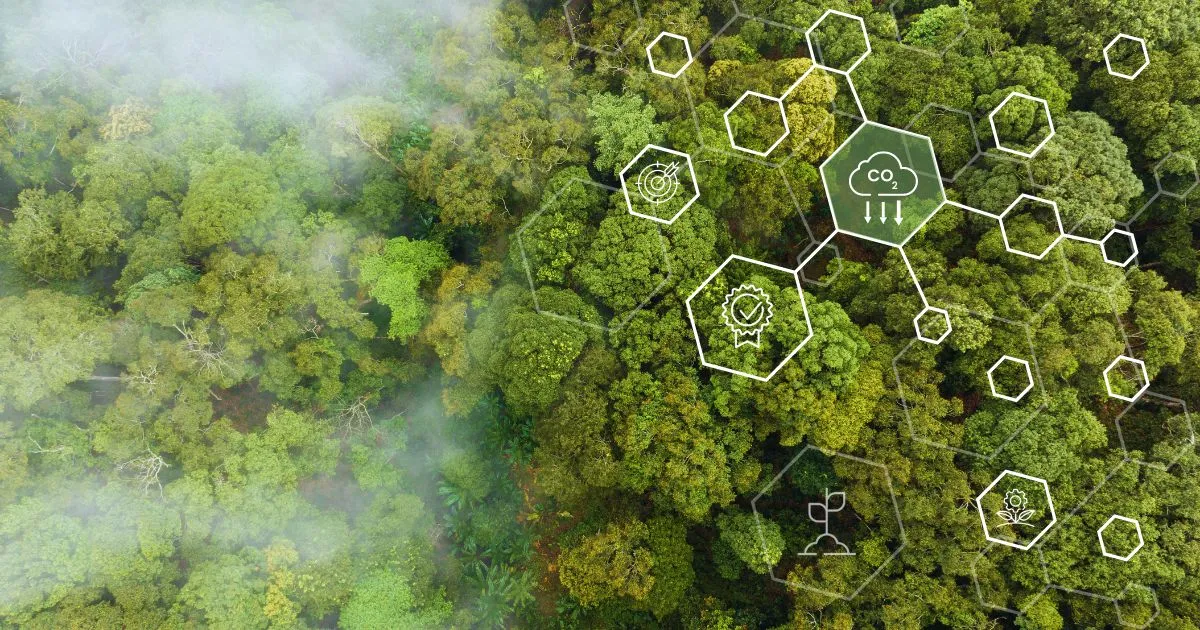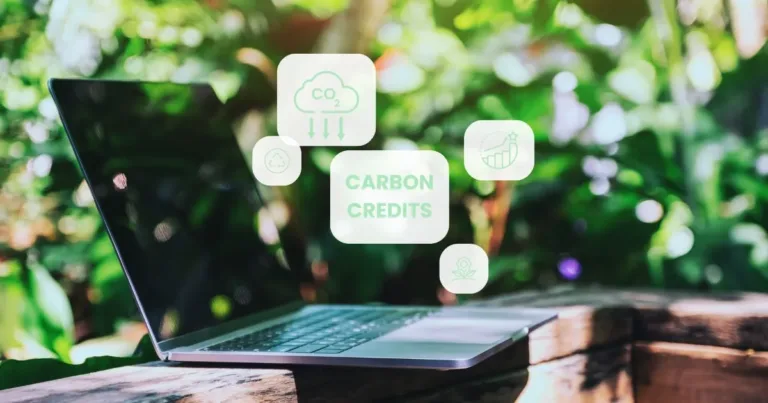
Investing in high-quality carbon credits while generating positive headlines
Even if you have been only a little bit involved in the carbon market in the last couple of years, you’ve probably noticed its unpredictability, which can be interpreted as an indication that the regulatory frameworks are not strong enough.
The volatility of the market stems from various factors, including carbon projects issuing credits that have the level of consistency and earnestness of promises made on a first date. In many cases, they fail to clear hurdles of meeting even minimum standards of transparency, robustness and rigour, or to deliver promised environmental benefits. Meanwhile, corporations buy these credits, often without fully understanding their true value.
Not all carbon credits are created equal
Voluntary carbon credits (VCC), such as Verfied Carbon Units under Verra (VCU), Verified Emissions Reductions under Gold Standard (VER), and others, as well as Australian carbon credit units (ACCUs), which can also be used voluntarily, each have their own set of rules and requirements leading to carbon project validation, verification and carbon credit issuances. However, not all carbon credits are created equal; not even projects registered under the same standard can be compared on a like-for-like basis and can fall short of their promises.
In a market characterised by great variability, it’s like playing Minesweeper while being blindfolded. It’s ever so challenging for investors to identify credits that truly deliver on their promises. Companies aiming for reliable offsets fear ending up as the subject of a scathing article in The Guardian, should their voluntary climate efforts be undermined by credits that turn out to be far less robust than anticipated.
Corporates are therefore looking for investment grade carbon credits, which are high-quality carbon credits that meet stringent criteria that ensure reliability and their effectiveness. Determining the quality of investment-grade credits is rather complex and involves considering numerous factors.
The setup of a carbon project
Understanding the variability in carbon credits is as complex as decoding the Da Vinci Code, but with more acronyms. This variability arises from differences in underlying standards, methodologies used, quality of project execution, and the credibility of the entities involved. It essentially comes down to how well a project is carried out.
Here’s a breakdown of how a carbon project is set up and what is involved in making carbon credits investment-grade credits:
Underlying standard
The quality of a carbon credit fundamentally begins with examining what the underlying standard of a carbon project is. Each standard has different methodologies or ‘methods’ under which a project is registered. A method essentially serves as an instruction manual outlining the eligible activities and rules a project must follow to either avoid or remove carbon emissions. In addition, the method prescribes how to estimate the carbon abatement of a project.
Project registration
Several eligibility criteria must be met when registering a project. These eligibility include, for example, additionality (making sure the carbon reductions wouldn’t happen without the project), permanence (ensuring the carbon sequestration is durable and not easily reversed), and leakage prevention (stopping the project from causing emissions elsewhere).
In the case of land-based carbon projects, the question of land ownership and consent of affected communities, e.g., under the principles of FPIC (free prior informed consent) under the UN Declaration on the Rights of Indigenous Peoples, when Indigenous landholders are involved, also plays a key role.
Validation and verification
Once the respective standard’s validation process confirms that a project site meet these eligibility criteria and is registered, it undergoes rigorous verification processes conducted by independent third-party auditors every time a carbon credit issuance is solicited. These auditors are the carbon cops, ensuring the project is implemented according to the methodology and that the reported reductions aren’t just a bunch of hot air.
Credit issuance
After registration and validation, emissions reductions are calculated following the method’s guidelines as part of the verification process. For every one ton of greenhouse gas equivalent (e.g., CO2) a project mitigates, one carbon credit unit is generated. Upon successful verification, a project proponent (owner), who has the legal right to carry out the project, can either retain or retire their issued credits or sell them to corporations or individuals seeking to offset their emissions.
So, a carbon credit is a bit like a dollar: you can hold it, or you can pass it on (sell it). The main difference is that you can retire a carbon credit. This means that when that happens, the emissions reduction of the tonnes of CO2 equivalent that the retired quantity of carbon credits represent, is taken out of circulation. And the entity retiring it can claim that their emissions have been reduced by the same amount.

Understanding carbon credit variability
To identify high-quality, investment-grade credits, it is essential to understand the fundamentals of carbon project development. This knowledge helps to discern which projects deliver genuine environmental benefits, ensuring your investments don’t end up being the financial equivalent of purchasing a home with hidden damages.
To evaluate investment-grade credits you must consider several critical factors that ensure the credibility and effectiveness of the carbon offset project. This will help you avoid stepping on a carbon credit landmine, these factors are:
- Underlying standard & methodology: Remember the instruction manual mentioned earlier? The standard dictates the methodologies and verification processes, ensuring the project follows best practices.
- Country of origin: Countries with strong environmental regulations and effective enforcement mechanisms tend to produce higher-quality carbon projects. These regulations ensure that projects adhere to stringent standards and that any reported emissions reductions are genuine and verifiable.
- Quality of project execution: Adherence to best practices and efficient management are paramount. Assessing how well the project’s execution aligns with the requirements and activities specified under its method is vital for ensuring effective carbon sequestration or reduction.
- Project developer credibility and experience: Developers with a proven track record and solid background are more likely to deliver reliable projects. It’s like checking Google reviews before trying that new sushi place. However, this shouldn’t be taken for granted. Even reputable developers can make mistakes or partner with unreliable entities. Continuous due diligence in their current partnerships and ongoing projects is encouraged.
- Financial stability: A healthy balance sheet of the project developer or related financial investor in question, ensures that a project can sustain its operations and continue to sequester or reduce carbon emissions effectively over time. A strong financial background indicates that the parties involved can invest in necessary technologies, management practices, and monitoring systems to enhance project performance and maintain this level of commitment over the course of the project’s lifetime. This reduces the risk of project failure and increases the likelihood of achieving the anticipated carbon reductions.
- Partner history and engagements: The history of the project partners and their previous engagements provide insights into their reliability. Knowing who they have sold credits to previously can indicate the market’s trust in their projects. It’s like knowing who borrowed your lawnmower and actually returned it.
- Verification processes: Every project projects must report its carbon reductions. Guaranteeing the accuracy of these reports involves a verification process to confirm the reported data is verifiable and trustworthy. Transparency is critical, as it requires all reported data to be accurate, relevant and accessible. Without transparent data, it’s impossible to properly verify the carbon reductions.
- Environmental and social impact: Beyond carbon reduction, carbon projects often offer additional positive environmental and social benefits, known as co-benefits. Assessing these broader impacts is crucial as co-benefits enhance the project’s overall effectiveness and comprehensiveness. Examples of co-benefits include things such as the creation of job opportunities, providing livelihood for communities, capacity-building, and improving air quality by reducing pollution.
- Core Carbon Principle (CCP) tag: An important aspect to consider is whether the project has a CCP tag. The CCP was developed by the Integrity Council for Voluntary Carbon Markets (ICVCM), an independent and widely accepted expert group dedicated to raising the bar when it comes to carbon credit quality. The CCP tag indicates that a project aligns with fundamental principles for high-quality carbon credits, such as additionality, permanence, and robust monitoring. If a project has this tag, it is a very good first indicator of its quality and that of related issued carbon credits.
- Another indication of quality is to verify that the standard under which the project is registered is also accredited by the International Carbon Reduction and Offset Alliance (ICROA).
- The combination of CCP tag and ICROA accreditation is like finding a restaurant that’s not only Michelin-starred but also health-code compliant.
Ensuring credits are worth the investment
So, you’re diving into the carbon credit market, and you’ve grasped how carbon credits are generated and what makes a project robust and transparent. How do you know those carbon credits are the real deal, and not just eco-fluff? You can’t exactly visit every project site or become a carbon Sherlock overnight. Enter carbon credit rating agencies – your personal detectives for green investments.
These agencies evaluate investment-grade credits by considering various factors, including those listed in the previous section.
However, keep in mind that carbon credit rating agencies are a relatively new phenomenon, and that they might still go through teething problems and a growing phase of their own. In this vein, carbon rating agencies have faced criticism from Carbon Market Watch for inconsistent grading and overlooking additional environmental benefits, raising concerns about their reliability.
This highlights the complexity of carbon credits, as varying methodologies and criteria used by different agencies make it difficult to standardise and compare credits. Yet, for many investors, especially those not so familiar with the carbon industry, these rating agencies represent an important opportunity to sharpen their understanding of carbon project quality.
In this sense, carbon credit rating agencies lead to greater transparency and confidence in the market. So, they serve a purpose. Ultimately, this is what all those wanting to fight climate change by growing the size and relevance of environmental markets want.
The balancing act of carbon credit investment
Investing in high-quality carbon credits is navigating a labyrinth where every turn might lead you to either a solid gold nugget or a glittery piece of fool’s gold.
As a rule of thumb, it’s wise not to put all your eggs in one basket. This is where Gondwana Carbon steps onto the scene. We focus on generating high-quality carbon credits that are viewed as being ‘investment grade’ by the market. We advice other market participants to further support this drive towards quality by developing assessment criteria aligned with values, internal climate and social targets, and investment priorities.
To distinguish ourselves from rating agencies and generate valuable information to support client decision–making, we employ a comprehensive approach that includes deep due diligence, conducting extensive research on selected projects, and active stakeholder engagement. In the event of a project collapse, transparency and disclosure are essential to demonstrate decisions were made with the best available information at the time.
The key lies in arming yourself with knowledge and leveraging the expertise of reputable industry experts, as many entities determine what qualifies as investment-grade carbon credits. By doing so, you can confidently support projects that make a genuine impact, dodge the pitfalls of low-quality credits, and maybe even become the climate hero your investors and customers dream about.
Let's get in touch
We seek to partner with organisations committed to strengthening the market and fostering the generation of high-quality, integrity credits through enhanced transparency, disclosure, governance, co-benefits, and capacity building.
* Gondwana Carbon is a Signatory of the Carbon Market Institute’s (CMI) industry Code of Conduct. This Code defines global industry best practices for carbon service providers, project owners, agents, aggregators, and advisers in Australia’s carbon industry, ensuring that Gondwana Carbon adheres to the highest standards of integrity, transparency, and accountability.

